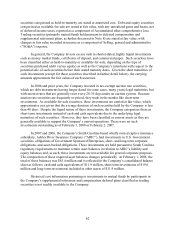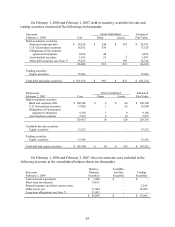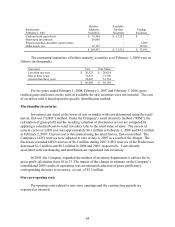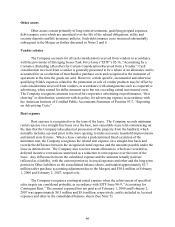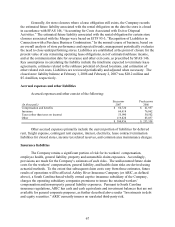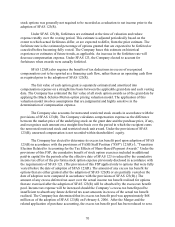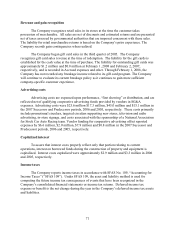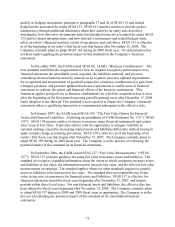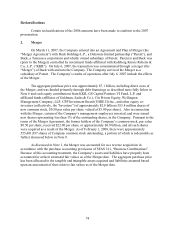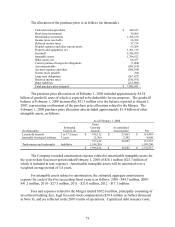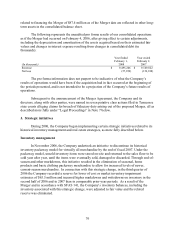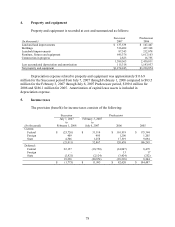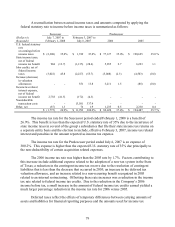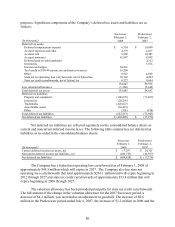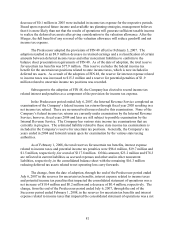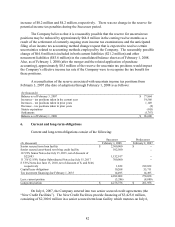Dollar General 2007 Annual Report Download - page 74
Download and view the complete annual report
Please find page 74 of the 2007 Dollar General annual report below. You can navigate through the pages in the report by either clicking on the pages listed below, or by using the keyword search tool below to find specific information within the annual report.72
As discussed in Note 5, effective February 3, 2007 the Predecessor modified its method
of accounting for income taxes in connection with the adoption of FASB Interpretation 48,
Accounting for Uncertainty in Income Taxes – An Interpretation of FASB Statement 109 (“FIN
48”). The adoption resulted in an $8.9 million decrease in retained earnings and a reclassification
of certain amounts between deferred income taxes and other noncurrent liabilities to conform to
the balance sheet presentation requirements of FIN 48. As of the date of adoption, the total
reserve for uncertain tax benefits was $77.9 million. This reserve excludes the federal income tax
benefit for the uncertain tax positions related to state income taxes, which is now included in
deferred tax assets. As a result of the adoption of FIN 48, the reserve for interest expense related
to income taxes was increased to $15.3 million and a reserve for potential penalties of $1.9
million related to uncertain income tax positions was recorded. As of the date of adoption,
approximately $27.1 million of the reserve for uncertain tax positions would impact the
Company’ s effective income tax rate if the Company were to recognize the tax benefit for these
positions. After the Merger and the related application of purchase accounting, no portion of the
reserve for uncertain tax positions that existed as of the date of adoption would impact our
effective tax rate but would, if subsequently recognized, reduce the amount of goodwill recorded
in relation to the Merger.
Subsequent to the adoption of FIN 48, the Company has elected to record income tax
related interest and penalties as a component of the provision for income tax expense.
Income tax reserves are determined using the methodology established by FIN 48. FIN
48 requires companies to assess each income tax position taken using a two step process. A
determination is first made as to whether it is more likely than not that the position will be
sustained, based upon the technical merits, upon examination by the taxing authorities. If the tax
position is expected to meet the more likely than not criteria, the benefit recorded for the tax
position equals the largest amount that is greater than 50% likely to be realized upon ultimate
settlement of the respective tax position. Uncertain tax positions require determinations and
estimated liabilities to be made based on provisions of the tax law which may be subject to
change or varying interpretation. If the Company’ s determinations and estimates prove to be
inaccurate, the resulting adjustments could be material to the Company’ s future financial results.
Management estimates
The preparation of financial statements and related disclosures in conformity with
accounting principles generally accepted in the United States requires management to make
estimates and assumptions that affect the reported amounts of assets and liabilities and disclosure
of contingent assets and liabilities at the date of the consolidated financial statements and the
reported amounts of revenues and expenses during the reporting periods. Actual results could
differ from those estimates.
Accounting pronouncements
In March 2008, the FASB issued SFAS No. 161, “Disclosures about Derivative
Instruments and Hedging Activities”, an amendment of FASB Statement No. 133. SFAS 161
applies to all derivative instruments and nonderivative instruments that are designated and


